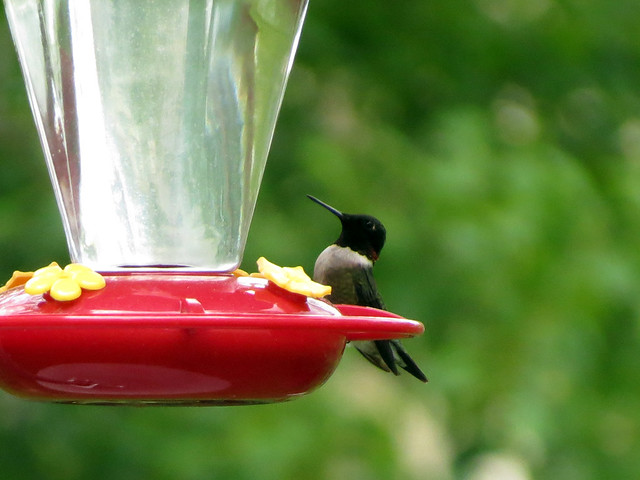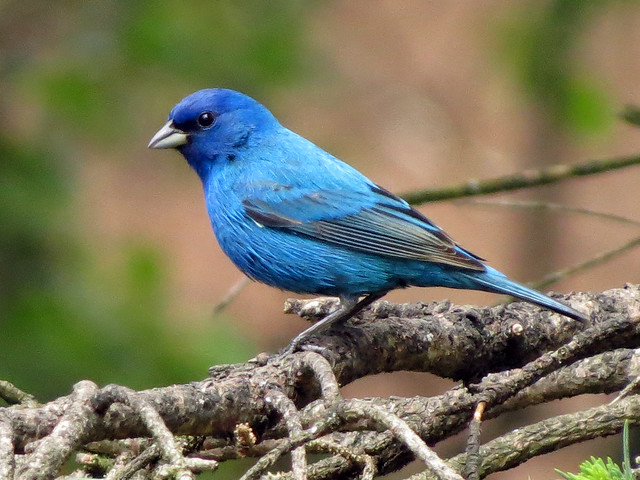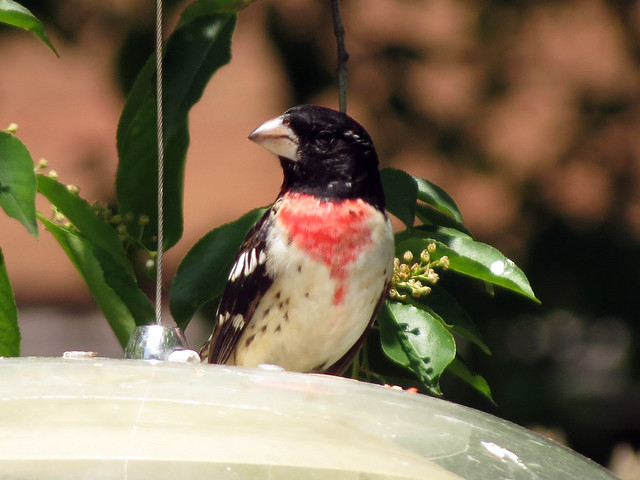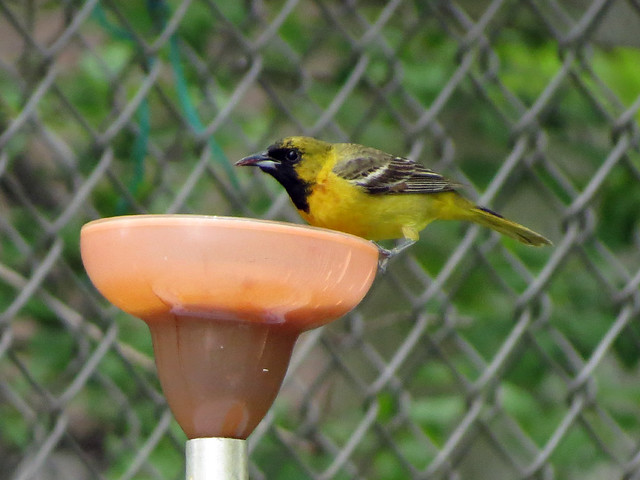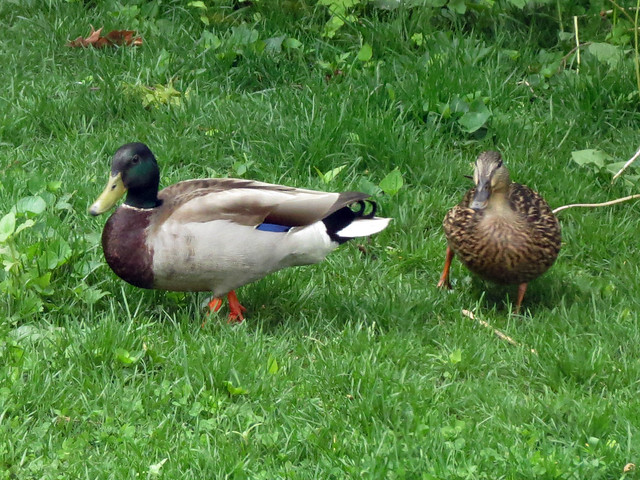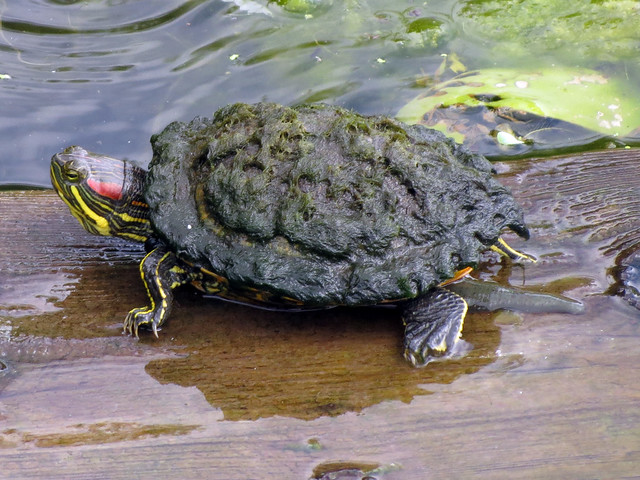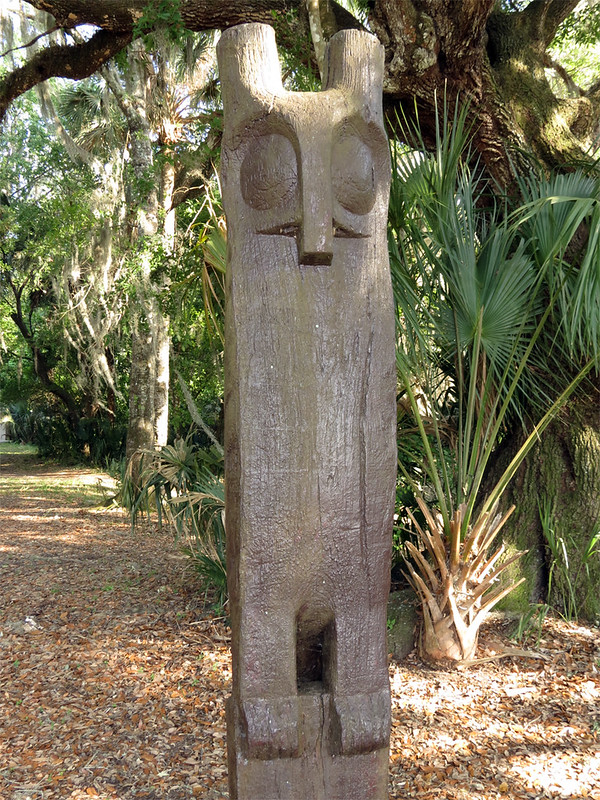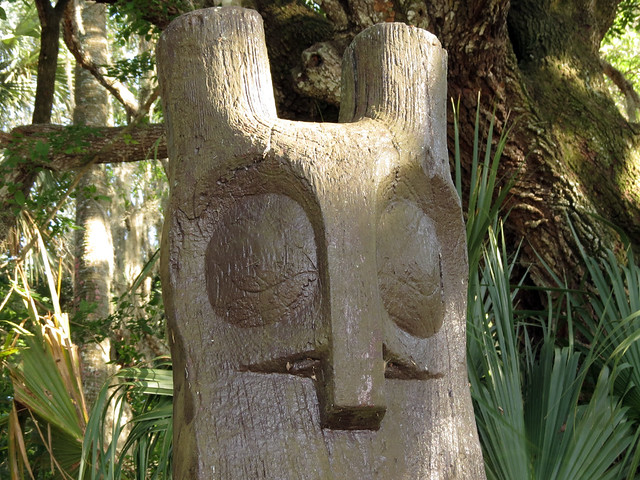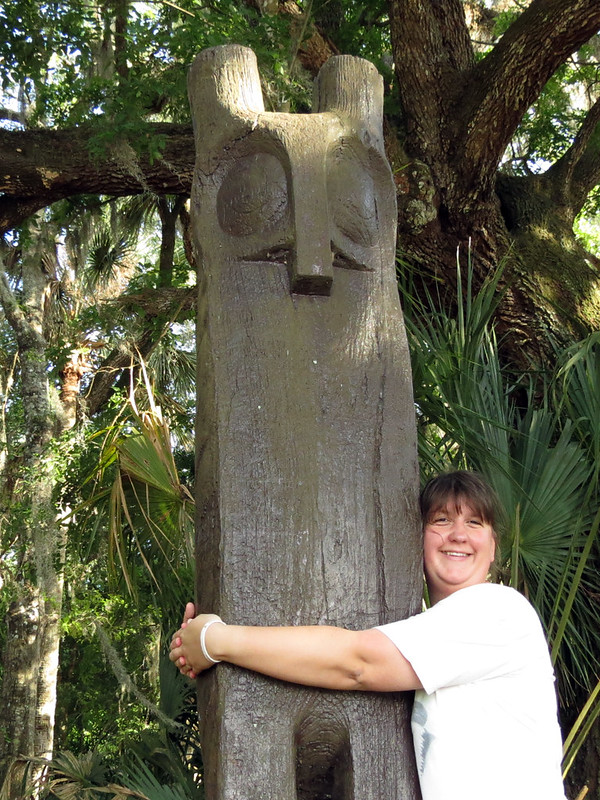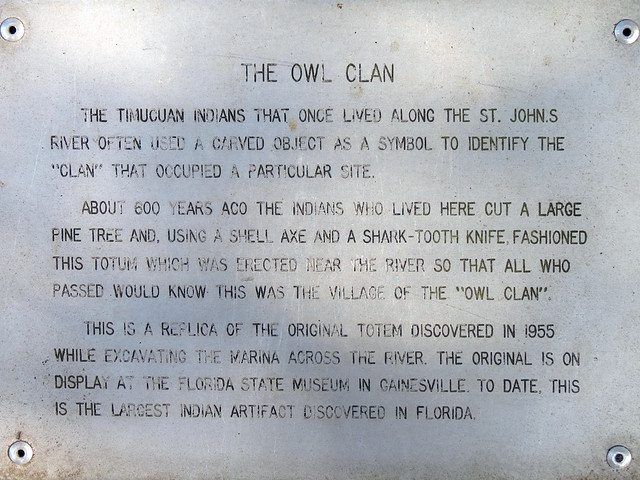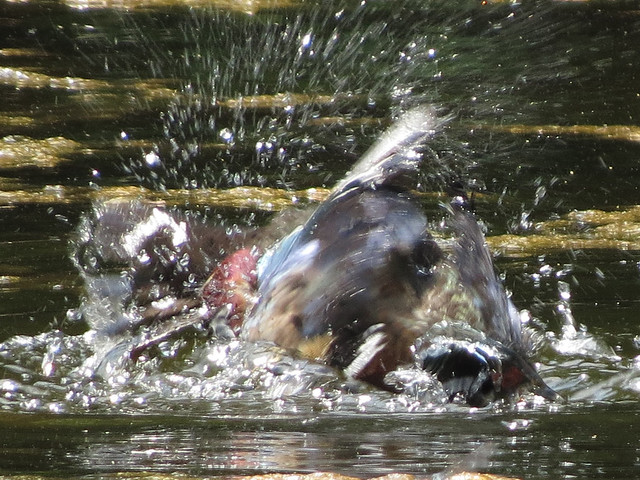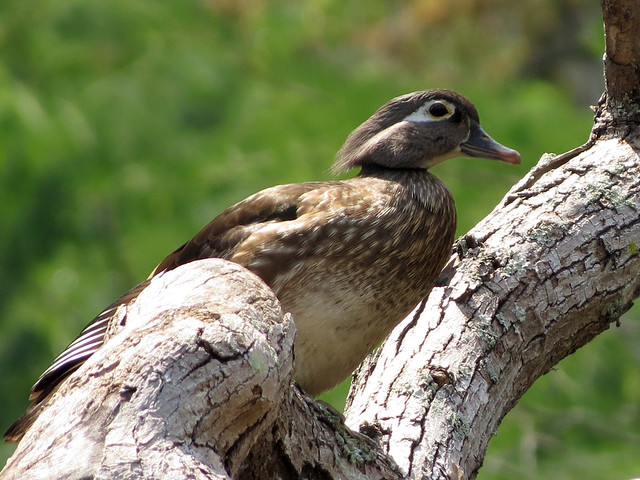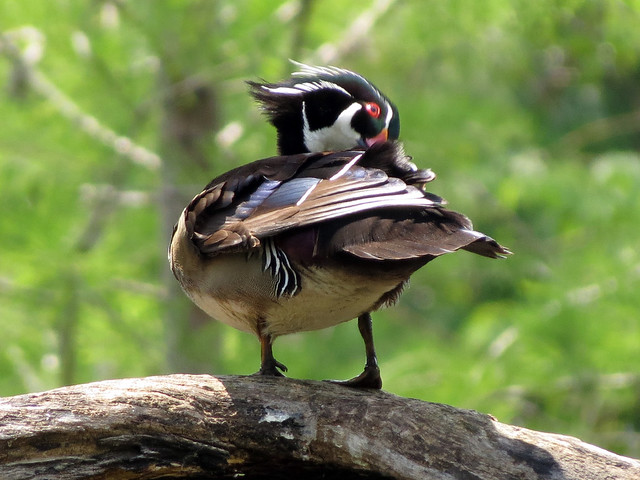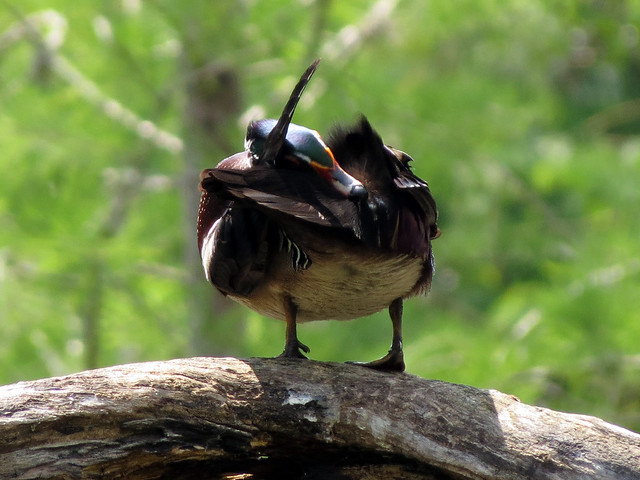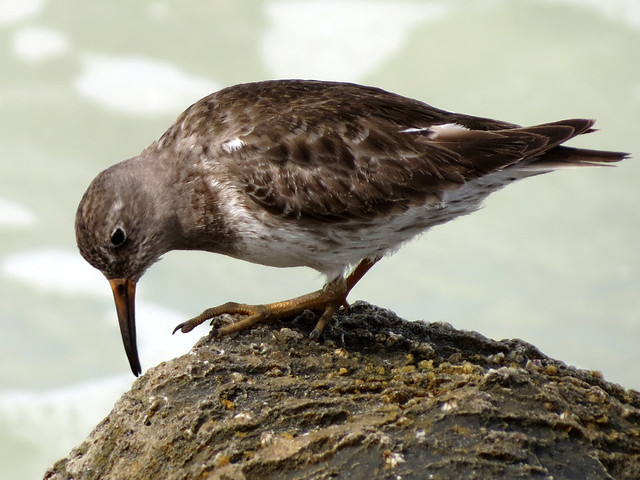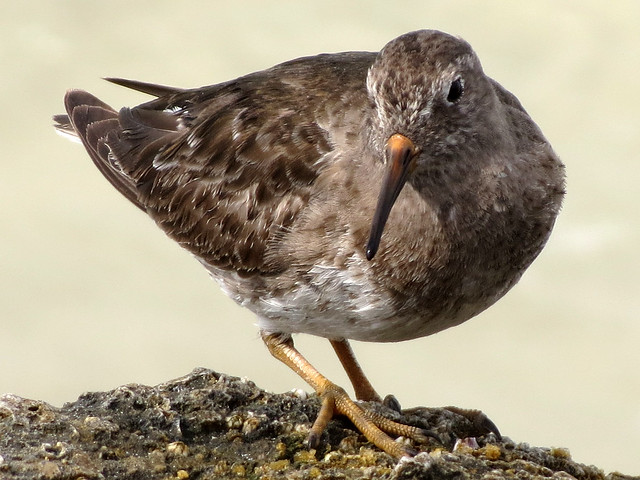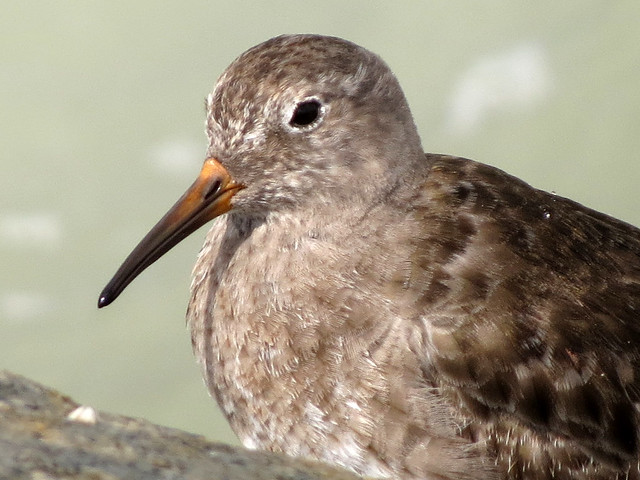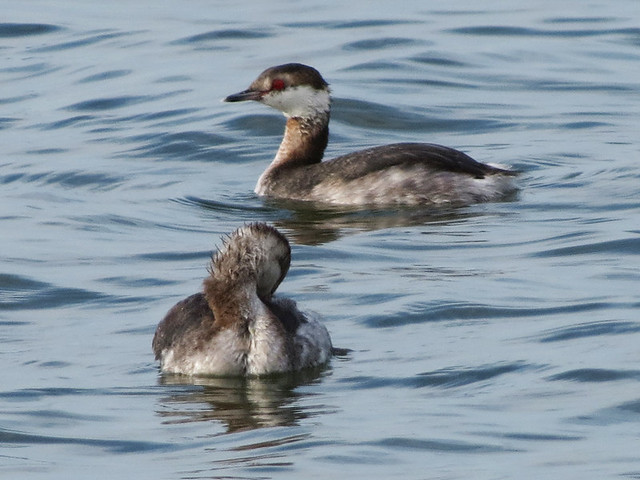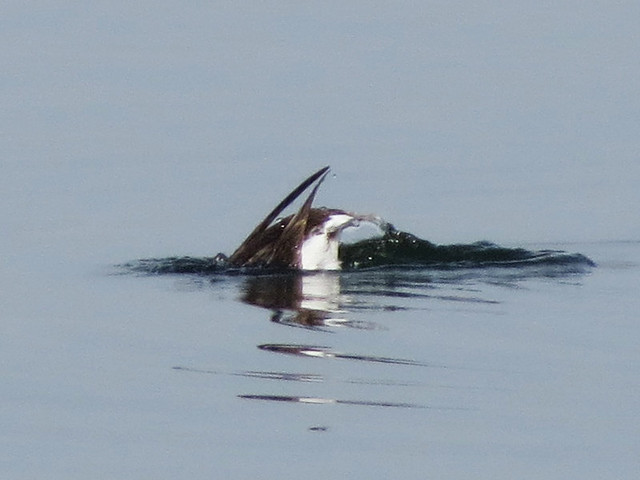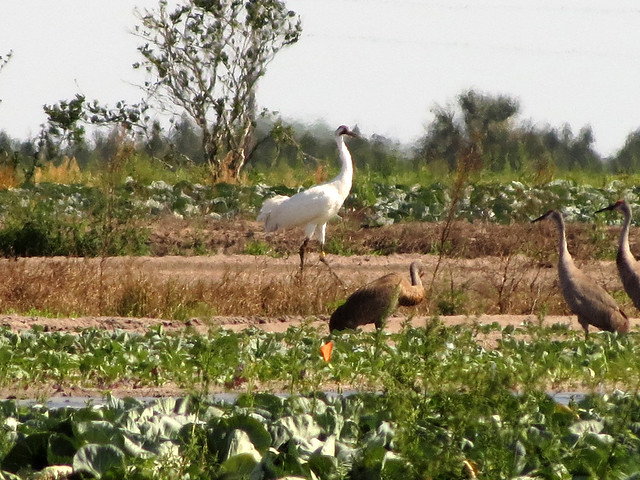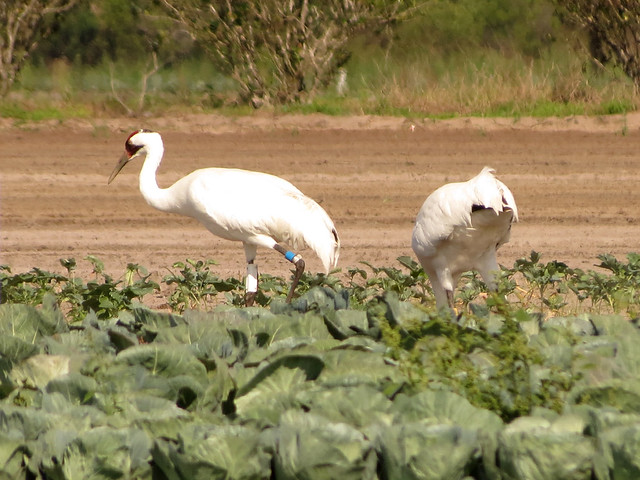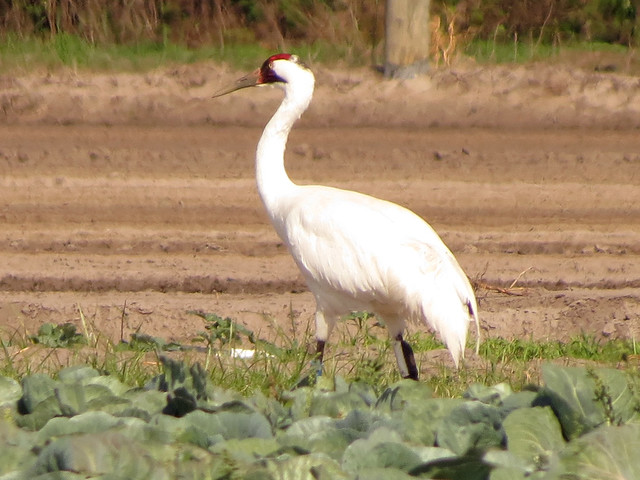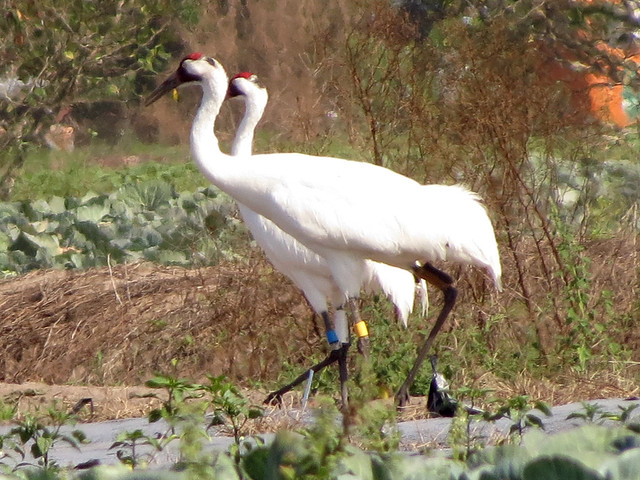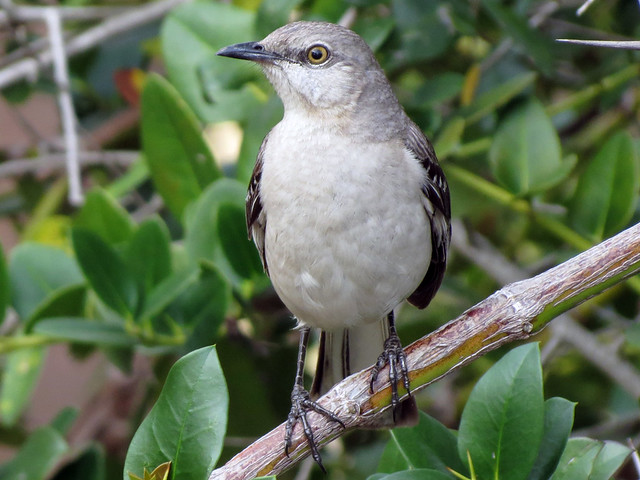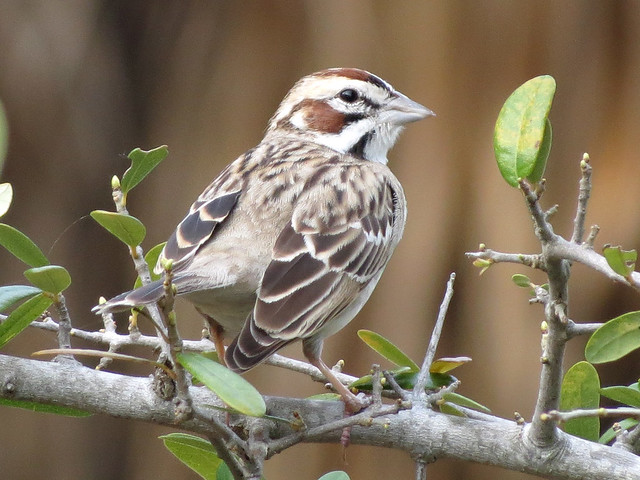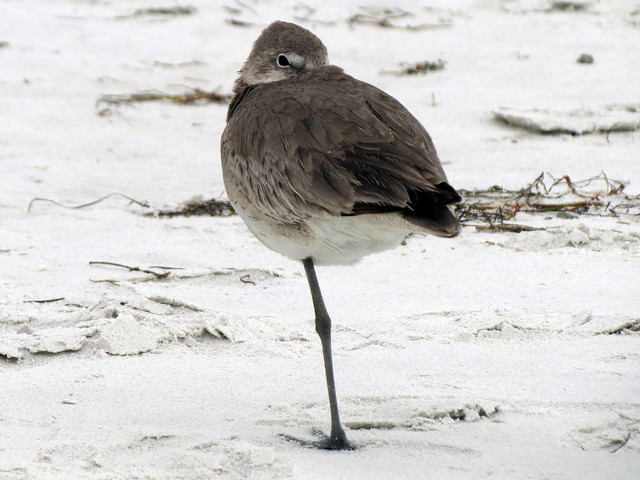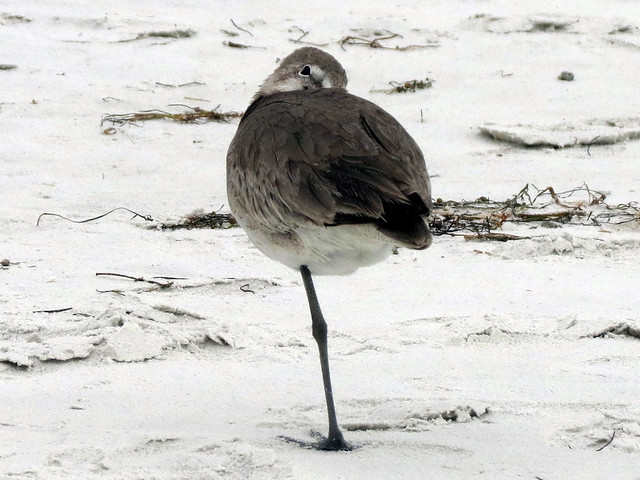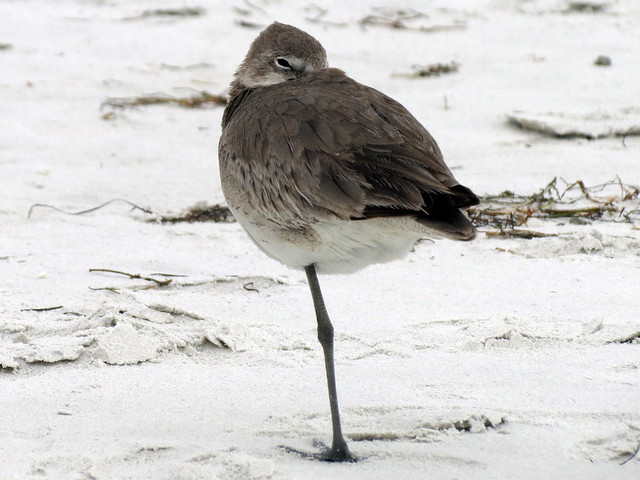Ubiquitous Tyrant
All of the photos in this post are from a 4 May 2012 Gemini Springs outing.
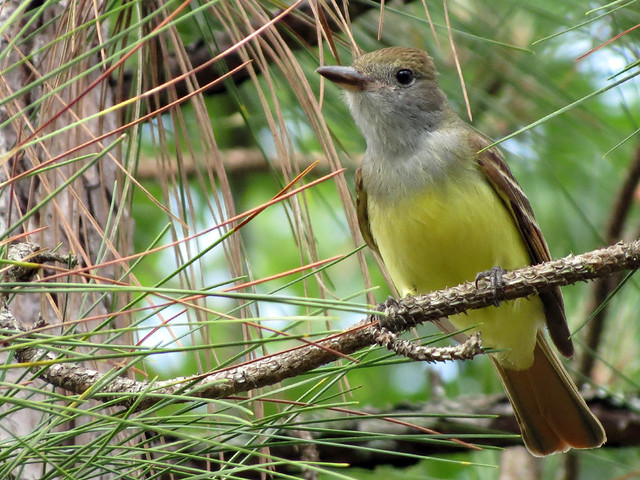
I saw my first Great Crested Flycatcher of the year on March 27th, in our neighbor’s yard. About a month later, Arthur and I had some excitement when we spotted a pair of them checking a large nestbox we had put up in our back yard. When we purchased the Screech Owl box, I learned which other birds might use it – the list included a few woodpecker species and the Great Crested. So when I saw a pair flitting about in our yard, I stopped to watch them, and silently willed them to head towards the right tree. I was so excited to watch them explore the box!

The birds were eventually chased out by squirrels (who’s the tyrant?!), but we still see and hear these large flycatchers in our yard and neighborhood frequently.
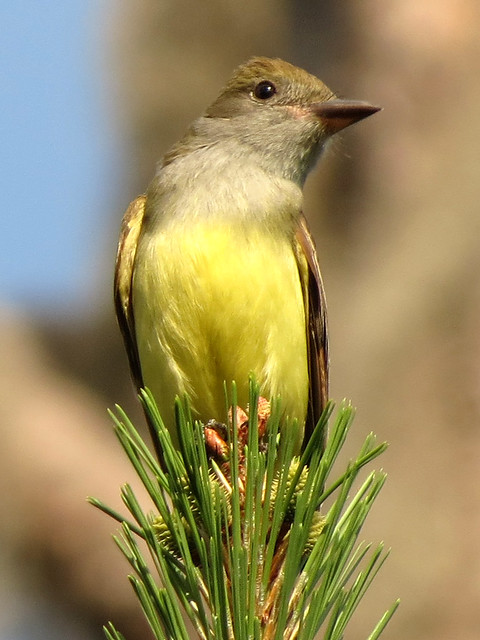
Great Cresteds were among the 83 species I saw during my recent trip to northern Illinois. A pair of birds was exploring a few natural, woodpecker-carved cavities in trees along the Des Plaines River at Ryerson Conservation Area. Some in our group were skeptical that they nested in cavities… but I knew. 🙂 Ryerson is where I first recorded this species on my life list, back in 2009.
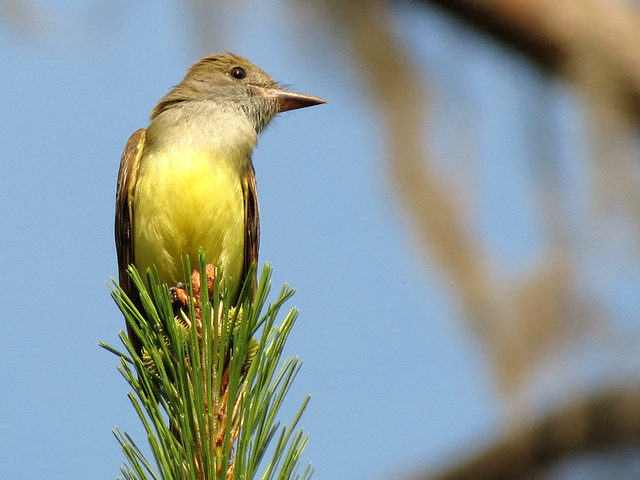
My most recent sighting occurred this afternoon during my volunteer shift at the Audubon Center for Birds of Prey. I followed a pair as they flew among the trees behind a row of hawk mews. Wouldn’t it be great if they were nesting there?





